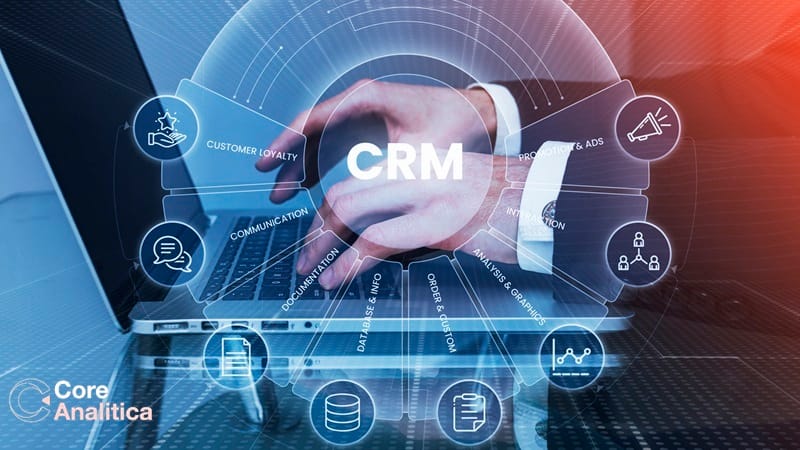
What Customer Relationship Management (CRM) is all about: Get, Keep, and Grow Stages
In business, where competition is aggressive and customer loyalty is not forever, Customer Relationship Management (CRM) isn’t just a fancy software or a buzzword; it is part of our business strategy, a powerful framework encompassing the entire customer journey, nurturing relationships from their beginnings to their maturity. Within this framework lies the holy trinity of customer success: Get, Keep, and Grow stages.
Get Stage: Opening the Door to New Customers
Imagine a marketplace, where your brand stands amidst a number of competitors looking for attention. This is where the Get strategy comes in, where the focus is on acquiring new customers, drawing them into our orbit. Strategies abound in this stage, from targeted marketing campaigns that speak to specific needs and desires, to unique onboarding experiences that convert interest into action.
Acquisition Strategy:
Imagine we are a store in a marketplace. Acquisition strategies are our eye-catching window displays and advertisements. We target ideal customers with customized marketing, crafting messages that resonate with their wants and needs. Content marketing, social media, and onboarding experiences all play a role in welcoming prospects through the door.
Activation Strategy:
Once inside, it’s time to light the fire of engagement. Activation transforms passive visitors into active participants. Offer personalized recommendations for purchase, and responsive support to ensure a smooth first experience. This positive introduction paves the way for meaningful interaction.
Relevant Key Performance Indicator (KPI): Customer Acquisition Cost (CAC)
Measuring the effectiveness of our Get strategy is crucial. By tracking our Customer Acquisition Cost (CAC), which represents the average amount spent to acquire a single customer, we can optimize our marketing spend and focus on the most cost-effective channels for attracting new customers.
Keep Stage: Building Loyalty for Long Term Relationships
Once a customer crosses the threshold, our focus shifts to keep them with us, where the goal is to foster loyalty and nurture long-lasting relationships. This is the stage where we transform simple transactions into enduring partnerships.
Loyalty Programs Strategy:
Imagine customers not just visiting our brand, but returning like magnets drawn to an irresistible force. Loyalty programs are this magic in our business strategy. Sure, points, discounts, and exclusive offers are the sugar that sweetens the loyalty cake. But effective programs go deeper, creating emotional connections. Personalized experiences, customized recommendations, and community building initiatives make customers feel valued and understood. Imagine birthday greetings, early access to sales, or invitations to exclusive events: these small touches mean a lot to our customers.
Furthermore, customer data is waiting to be mined for insights, that is why we should make the most of this information to personalize our loyalty programs. Recommend products based on past purchases, offer relevant rewards, and personalize content to individual preferences. This focused approach makes customers feel appreciated and incentivizes engagement.
Relevant Key Performance Indicator (KPI): Customer Lifetime Value (CLTV)
The true measure of success in the Keep stage lies in Customer Lifetime Value (CLTV). This metric represents the total revenue a customer generates over their entire relationship with our brand. By understanding CLTV, we can prioritize customer retention efforts and invest in strategies that maximize the long-term value of our relationships.

Grow Stage: Scaling Customer Success
The mountain top of the customer journey lies in the Grow stage, where we extend our reach and expand customer value. This is the stage where we upsell, cross-sell, next sell, and encourage referrals, transforming satisfied customers into real advocates and brand ambassadors.
Upselling Strategy: Here we encourage our customers to upgrade to higher-value products or services that better meet their evolving needs. Offering bundle deals, limited-time promotions, and personalized recommendations to our customers to make upselling a natural progression.
Cross-selling Strategy: Here we e\xpand customer value by introducing them to complementary products or services within our portfolio. Highlighting synergies and showcasing how additional offerings can enhance the experience of our customers.
Next Selling Strategy: Anticipating future needs and proactively suggest relevant products or services before our customers even ask. Also analyzing purchase history and tracking customer behavior to identify potential next purchases.
Referrals Strategy: Here we encourage our customers to spread the word by offering rewards for successful referrals. This can be discounts, bonus points, or exclusive access to new products or services.
Relevant Key Performance Indicator (KPI): Average Ticket
Tracking our Average Ticket, which represents the average amount spent per customer, is crucial in the Grow stage. By increasing our average ticket, we can boost revenue without acquiring new customers. Upselling, cross-selling, next selling and effective referral programs can all contribute to a higher average ticket, leading to sustained growth and profitability.
Remember, Customer Relationship Management (CRM) is not a software but an important part of our business strategy with three correlated stages Get, Keep, and Grow. Each stage builds upon the previous one. The best companies in the world, no matter their size, implement effective CRM strategies.
Recent Posts
- Beyond the Rear-View Mirror: How Modern Analytics Is About Predicting the Future, Not Just Reporting the Past
- “What If…?” — Moving from Static Dashboards to Strategic Conversations with Your Data
- The Power BI Revolution: Why Giving Data to Everyone Is the Smartest Business Move
- Why Your Data “Plumbers” Are Your Most Valuable Growth Asset
- Data-Driven or Data-Overwhelmed? How to Build a Culture That Actually Uses Analytics

